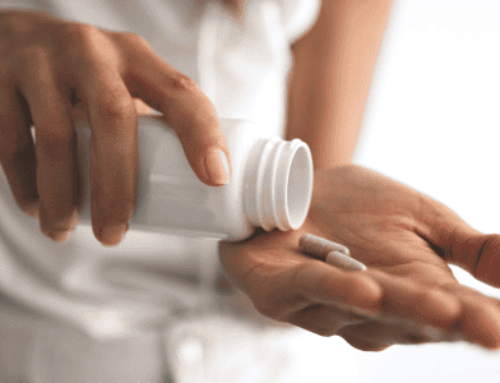
So… what is fatty liver?
Picture this: You and three other people are working together as an efficient team in a small office space. Your job is to regularly check the computer screens and filter through all the incoming mail and data. Every now and then you’ll have to print out some documents and pass them on to your team members for signing, and occasionally some documents will make their way to you as well. It’s a great little clockwork team, and high-fives go around regularly. Acing it! But then one day… in come the cats!
Day by day, cats start appearing in the office. In no time your little office is overrun with cats. These furry balls of cuteness and destruction are causing havoc – lying on the keyboards, getting in between your feet, shredding important documents, distracting you and the team with their purrs. The team is no longer able to do their jobs as efficiently as before because these darn critters are getting in the way.
And that is essentially what a fatty liver is – an accumulation of fatty deposits in the liver. Your liver is the office space, with you and your workmates being the liver cells. The cats are fatty deposits – they’re not meant to be there; not in such large numbers at the very least. One or two cats? Your team will probably still be able to cope and do their jobs properly. 100 cats? Not so great for work performance, it’ll start to decline. 10,000 cats? Your team is going to be in trouble –besides being unable to do much work being crammed in such a tiny space with these four-legged menaces, your team could be suffering inflammation and scarring! (Who wouldn’t? That’s a lot of fur-burn AND claws!)
Your liver is the most complex organ in the body after the brain. The liver cells are responsible for a lot of important bodily functions – from regulating blood sugars and cholesterol levels, to aiding digestion and filtering toxins from your blood. And the good news is your liver is extremely resilient! As long as no scarring has occurred; the team of liver cells can resume working at full efficiency once all the “cats” have been evacuated and the infiltration has been reversed. Huzzah!
Reversible? Great! What can I do to help my liver?
Here are some steps you can take to slow down and reduce the rate of fatty deposits in your liver. Out with the cats!
Drink less alcohol
The by-products of alcohol consumption really messes with the way your liver cells metabolises fat. Not only does it increase the production of fatty acids in the liver, it actually stops your body from using these fatty acids for fuel. This leads to a build-up of fatty acids inside the liver. Using the cat-office analogy, each team member is forced to bring extra cats into the office and barred from taking any out each time alcohol is consumed.
So if you’re serious about reducing the fatty deposits in your liver, then you may have to get serious about how much alcohol you drink. Choose lower-alcohol drinks, volunteer to be the designated driver at social events, and aim for as many alcohol-free days as possible.
Eat a balanced, healthy diet consisting of high-fibre, low-fat “whole” foods.
There is no special “liver cleansing” diet that will magically melt off the fat inside your liver. The rules are simple – eat less processed foods and choose more high-fibre, low-fat whole foods. Some simple swaps that could go a long way include :-
- Swap your baked goods or biscuits for higher fibre options such as fresh fruit, or a nice slice of grainy bread.
- Add more vegetables to your meals – it doesn’t need to be fancy or “super” like kale or fermented cabbage. Any mix of vegetables will do as long as it’s not *just* potatoes on the plate. Need inspiration? Click here.
- Choose lean, less processed meats or try a high-fibre vegetarian alternative such as legumes and lentils. Try this recipe – it’s a great combination of both!
Avoid added sugars
Stop freaking out about the sugars in whole foods such as fresh fruit or unflavoured dairy products such as fresh milk or natural yogurt – here’s why. What you should be looking out for is added sugars in sugar-sweetened beverages (e.g. regular soft drinks, flavoured dairy, cordials), lollies and confectionery. I’m also looking at you, fruit juice. You may not have any added sugars, but we all know you’re concentrated fruit sugars in a cup (3 small oranges per cup of juice) minus the goodness of dietary fibre!
Foods that are high in added sugars often contain little to no fibre, which means we can easily over-consume them. This can quickly contribute to excess calories, which in turn can cause fat to build up in the liver.
Get active!
Exercise has the opposite effect of alcohol on the liver, as it decreases the amount of fatty acids made in the liver, and it also encourages fatty acids to be used for fuel. This reduces the amount of fatty-acid build-up in the liver. Studies have shown that physical inactivity is related to the severity of fatty liver disease irrespective of body weight. This means someone who is sedentary and spends a lot of their day sitting down will be at a much higher risk of having a fatty liver when compared to someone who weighs exactly the same but does a regular amount of physical activity.
Should I be taking liver tonics or supplements to “detox” my liver?
The liver is extremely efficient at self-regulation and de-toxing when it’s not being inundated with fatty deposits – so there really is no need for expensive supplements. It’s always a good idea to talk to your doctor before you start taking any vitamin, mineral or herbal supplements as some of these may contain ingredients that can actually cause liver damage.
Have you recently been diagnosed with fatty liver or know someone who has? A qualified dietitian can provide individualised nutrition advice and work together with you to manage this condition before it becomes too late!
If you’d like further help with your nutrition please click below:
References:
- GAO, B., & BATALLER, R. (2011). Alcoholic Liver Disease: Pathogenesis and New Therapeutic Targets. Gastroenterology, 141(5), 1572–1585. http://doi.org/10.1053/j.gastro.2011.09.002
- Van der Windt, D. J., Sud, V., Zhang, H., Tsung, A., & Huang, H. (2018). The Effects of Physical Exercise on Fatty Liver Disease. Gene Expression, 18(2), 89–101. http://doi.org/10.3727/105221617X15124844266408



